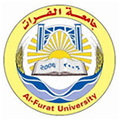آخر الأخبار
تأثير الأكسين والبيئة الغذائية والفحم النشط والإظلام في تجذير التفاح الديري
2013, Volume 8, issue 30,pp 86-107| Cite as
Effect of auxins ,culture medium ,activated charcoal and dark treatments on in vitro rooting of apple (malus sylvestris L.)
| authors |
Ziad Al-Hussein,Radah Badran |
| Abstract |
This work was carried out to optimize a successful protocol for shoot rooting of apple (Malus sylvestris L) tissue culture ecoty.Deire. Influence of different concentrations of different types of auxins, solid/liquid medium, role of darking, activated charcoal (AC) treatment and different MS salts strengths or 1/2 strength NH4NO3 were seen on rooting. MS medium supplemented with various concentrations (0.1-0.5 1 mg/l) of different types of auxins ( IBA,NAA and IAA) was studied. IBA and NAA was found to be more effective than IAA for number of roots and root percentage, whereas the addition 1mg./ of IAA gave the longest roots. Among different concentrations of NAA was observed the highest root percentage and the longest roots by adding 2.0 mg/ NAA. whereas 3 mg/l gave the highest number of roots. The effect of culture medium formula and ammonium nitrate (NH4NO3 ) on root regeneration reveals that the best rooting parameters were obtained while adding 2.0 mg/l NAA to a half strength MS medium. These results were followed by the use the full strength, 1/2 strength NH4NO3 and finally1/4 strength MS salts. According to the results, the highest root production with good root quality was obtained in agar solidified medium as compard to liquid medium. Dark treatment for few days was found to enhance root percentage efficiency, but there was no significant effect on the number and length of roots in solid/liquid medium Results indicated that treatment of activated charcoal (AC) negatively affected in vitro root proliferation in both of the mediums.
Keywords: apple, rooting, mediums, auxins , in vitro. |
| الكاتب |
زياد الحسين، رداح بدران |
| الملخص |
تضمن هذا البحث التوصل إلى طريقة ناجحة لتجذير عقل التفاح (Malus sylvestris L ) (أندول حمض الخلي IAA ،) (نفتالین حمض الخليك NAA،) (إندول حمض البيوتريك IBA),وحالة البيئة (صلبة أو سائلة )والمعاملة بالإظلام والفحم النشط وتراكيز مختلفة من الأملاح المعدنية لبيئةMurashige and Skoog (. (1962 وقد أظهرت مقارنة إضافة تراكيز مختلفة (1-0.5-0.1 مغ/ل) لأنواع مختلفة من الأكسينات (IBA,NAA&IAA ) أن IBA,NAA كانا أكثر فعالية من IAA بخصوص نسبة التجذير وعدد الجذور، وبمقارنة عدة تراكيز من NAA تبين أن إضافة 2 مغ/ل إلى البيئة الغذائية أعطت أعلى نسبة تجذير وأطول جذور، بينما كان أعلى متوسط لعدد الجذور عند إضافة 3 مغ/ل و تبين أن أفضل مؤشرات التجذير عند تخفيض تراكيز الأملاح المعدنية أو NH4NO3 فقط في بيئة M/S (1962) مع 2 مغ/ل NAA لبيئة تحوي نصف تركيز الأملاح المعدنية، ويليها نتائج التركيز الكامل أو نصف تركيز NH4NO3 ، بينما أقل القيم كانت مع تخفيض تركيز الأملاح إلى الربع. وبحسب النتائج فإن أفضل تكون للجذور مع نوعية جيدة كانت في البيئة الصلبة ) مع أجار )مقارنة بالبيئة السائلة، كما أن إظلام الأجزاء النباتية لمدة أسبوع استطاع دعم نسبة التجذير فقط و بشكل معنوي ، كذلك تشير النتيجة إلى أن إضافة الفحم النشط أثرت سلبياً على عملية التجذير وذلك في البيئة السائلة والصلبة. الكلمات المفتاحية: زراعة الأنسجة ، تفاح ، تجذير ، بيئة غذائية اوكسينات. |














